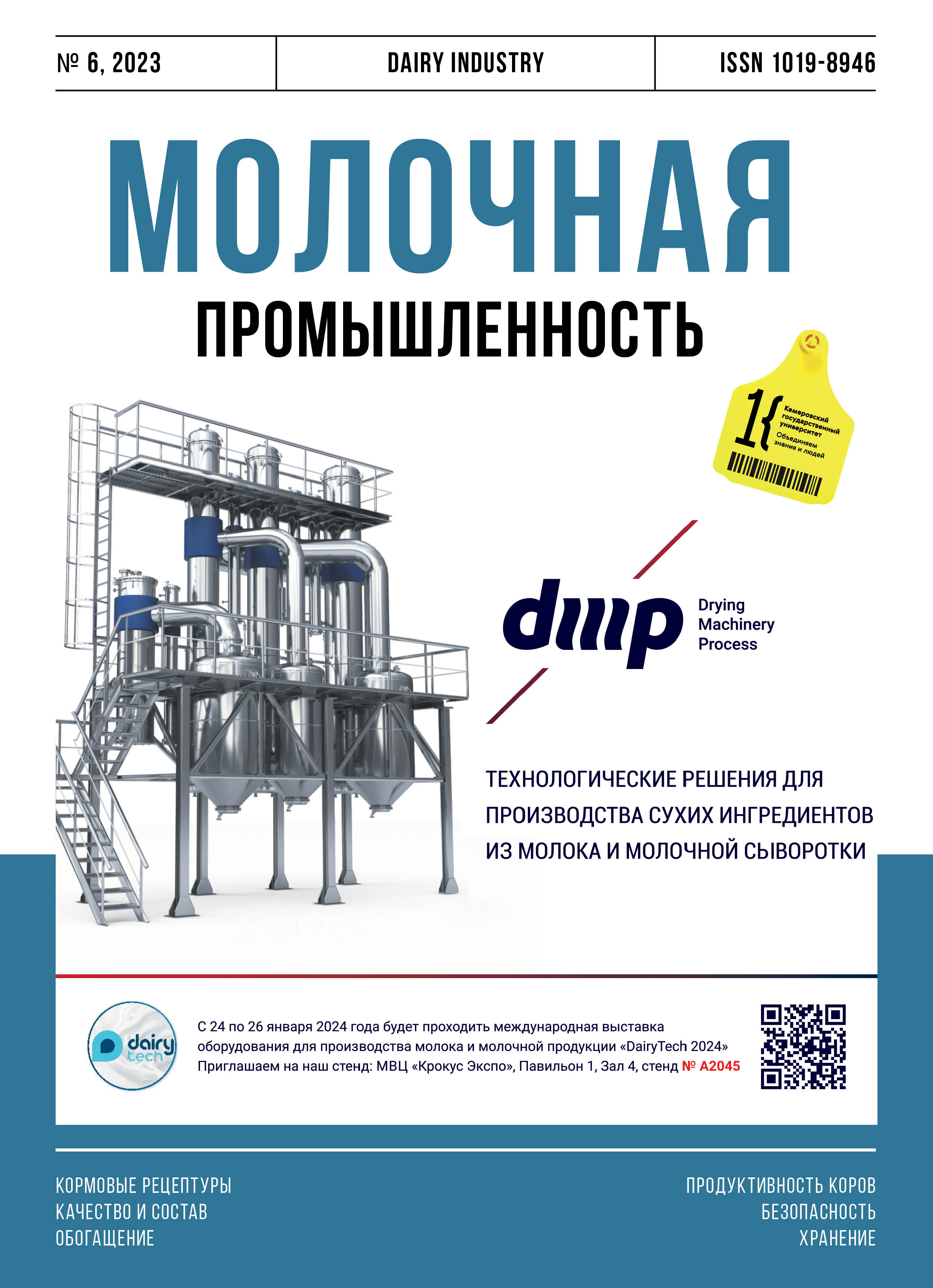Moscow, Russian Federation
Moscow, Russian Federation
Moscow, Russian Federation
The article discusses the problem of the quality of dairy products on the Russian market. The strategic importance of identifying cases of falsification is emphasized Existing methods for its detection are considered, their advantages and disadvantages are described. It is shown that in order to ensure the safety and quality standards of dairy products, it is necessary to regularly monitor raw materials and finished products, introduce a certification system for dairy group products and periodically improve the skills of production employees. Such measures will help prevent the manipulation of dairy products which can adversely affect the health of consumers. To achieve this goal, it is advisable to expand the area of evaluation criteria by a number of methods, including electrophoresis, chromatography, enzyme immunoassay, mass spectrometry, molecular genetics, etc. The article provides recommendations on the most appropriate methods for determining various sources of illegal milk substitution, including the replacement of valuable types of milk cheaper cow. The problem of falsification of dairy products remains relevant, especially in developing and underdeveloped countries. Solving this problem requires the joint efforts of scientific and regulatory bodies.
adulteration, polymerase chain reaction, milk, DNA, safety.
1. Hurshudyan, S. A. Kachestvo pischevyh produktov. Terminy, opredeleniya i protivorechiya / S. A. Hurshudyan, A. G. Galstyan// Kontrol' kachestva produkcii. 2018. № 1. S. 48-49.
2. Gil'manov, H. H. Problema fal'sifikacii vidovoy prinadlezhnosti moloka / H. H. Gil'manov [i dr.]// Aktual'nye voprosy molochnoy promyshlennosti, mezhotraslevye tehnologii i sistemy upravleniya kachestvom. 2020. T. 1. № 1 (1). S. 125-129. DOI10.37442 / 978-5-6043854-1-8-2020-1-125-129.
3. Pryanichnikova, N. S. K chastnym voprosam realizacii Strategii 2030 v molochnoy promyshlennosti / N. S. Pryanichnikova// Molochnaya promyshlennost'. 2022. № 9. S. 10-13. DOI 10.31515 / 1019-8946-2022-09-10-12.
4. Petrov, A. N. Aktual'nye aspekty protivodeystviya fal'sifikacii pischevyh produktov / A. N. Petrov, R. A. Hanfer'yan, A. G. Galstyan// Voprosy pitaniya. 2016. T. 85. № 5. S. 86-92.
5. Kuprina, A. V. Sovremennye problemy molochnoy otrasli v Rossii / A. V. Kuprina, A. V. Selyuk// Regional'nye problemy preobrazovaniya ekonomiki. 2018. № 5 (91). S. 14-22.
6. Voronin, B. A. Rynok proizvodstva moloka: statistika potrebleniya i kachestvo produkcii / B. A. Voronin [i dr.]// International agricultural journal. 2020. № 5. P. 28-42.
7. Kachestvo i bezopasnost' molochnoy produkcii - URL: https://gkan.cap.ru/news/2022/02/14/kachestvo-i-bezopasnostjmolochnoj-produkcii (Data obrascheniya 27.03.2023)
8. Rospotrebnadzor iz'yal iz oborota 22,7 t moloka i molochnoy produkcii - URL: https://roscontrol.com/journal/news/ rospotrebnadzor-izyal-iz-oborota-227-t-moloka-i-molochnoy-produktsii/ (Data obrascheniya 27.03.2023)
9. Azad, T. Common milk adulteration and their detection techniques / T. Azad, S. Ahmed// International Journal of Food Contamination. 2016. V. 3. P. 1-6.
10. Mafra, I. Animal species authentication in dairy products / I. Mafra, M. Honrado, J. S. Amaral// Foods. 2022. V. 11. № 8. P. 1124.
11. Nagraik, R. Milk adulterant detection: Conventional and biosensor based approaches: A review / R. Nagraik [et al.]// Sensing and Bio-Sensing Research. 2021. V. 33. R. 100433.
12. Vujadinović, D. Comparison of methods for determining the falsification of milk / D. Vujadinović [et al.]// J. Hyg. Engin. 2017. V. 18. P. 19-24.
13. Poonia, A. Detection of adulteration in milk: A review / A. Poonia [et al.]// International journal of dairy technology. 2017. V. 70. № 1. P. 23-42.







